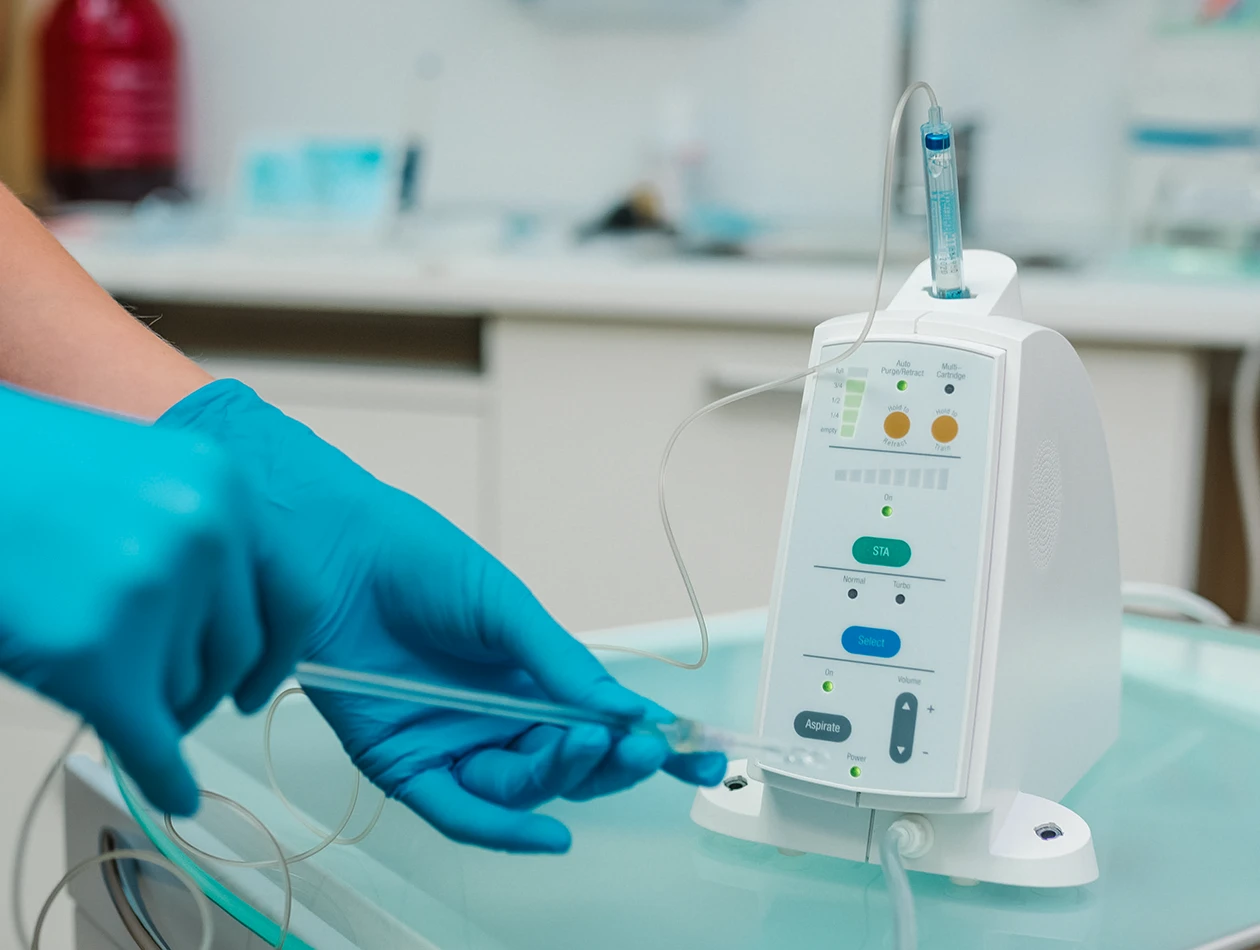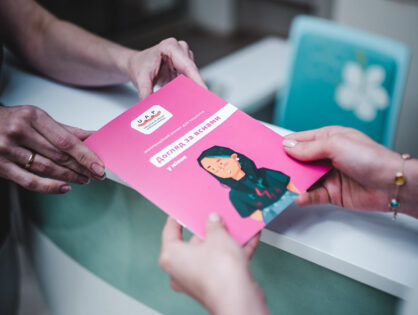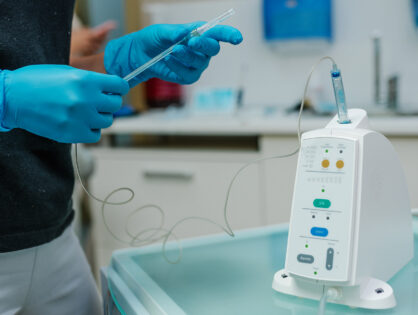Anesthesia is a procedure of temporary reduction/limitation of sensitivity, which allows the patient to undergo dental treatment with comfort and without stress, and doctors to freely perform all necessary manipulations. Modern methods of anesthesia are safe, and cases of complications from them and allergic reactions are minimal. In other words — the benefits of the use of anesthesia significantly exceed the possible risks.
The importance of anesthesia for medicine cannot be overestimated because its use made it possible to conduct and improve such methods of treatment that would be unacceptable provided that the patient’s usual sensitivity is preserved. The most important condition for successful anesthesia and health safety — strictly follow modern protocols and recommendations. Furthermore, the doctor must be appropriately qualified and follow pain relief protocols.
Myths about anesthesia
The ability to perform dental procedures without pain is perceived differently by patients, as some of them fear anesthesia no less than the manipulations themselves. This leads to the fact that treatment is postponed all the time, a person does not go to the dentist, as a result of which the condition of the oral cavity worsens, the diseases progress, causing the loss of teeth
Myths about anesthesia arise, in particular, due to a lack of awareness of modern methods, as well as the negative experience of using the first anesthetics that were not as perfect as they are now. The first, not always safe and successful, attempts at pain relief in dentistry with narcotic substances were made in the century before last, and these drugs were abandoned due to serious side effects and addictive effects.
Over this long period of time, approaches to pain relief have also changed, and other groups of substances are used that temporarily limit sensitivity without having narcotic properties.
This scenario is influenced by myths and stereotypes, the most common of which are the following:
Myth: the effect of anesthesia may end before the procedure is completed. In fact, modern anesthetics have come a long way of study and improvement, dentists accurately estimate the optimal dosage, considering the individual characteristics of the patient and the duration of the planned treatment.
Myth: baby teeth are treated without pain relief. This is not the case, there is no reason to force a child to go through pain and form a fear of dental treatment because modern medicine offers a wide range of safe drugs, including gels and sprays that do not even need an injection.
Myth: anesthesia won’t work. Some people do have reduced susceptibility to anesthetics. However, these are rare cases. Moreover, the dentist does not begin to carry out manipulations, as long as the patient remains sensitive. In addition, it is possible to use various anesthetics, and instead of local anesthesia, treatment under sedation can be used.
Myth: anesthesia is addictive. If anesthesia is used once or several times during dental procedures, its use for medical reasons does not cause any dependence, mental or physical addiction.
Myth: fear of not waking up after treatment under sedation (medication-induced sleep). Anesthesiologists calculate the dosage of the drug with high accuracy so that its effect passes after dental treatment without complications, and the quality of modern equipment avoids side effects.
Myth: anesthesia takes several years of life. This widely known statement currently has no scientific basis.
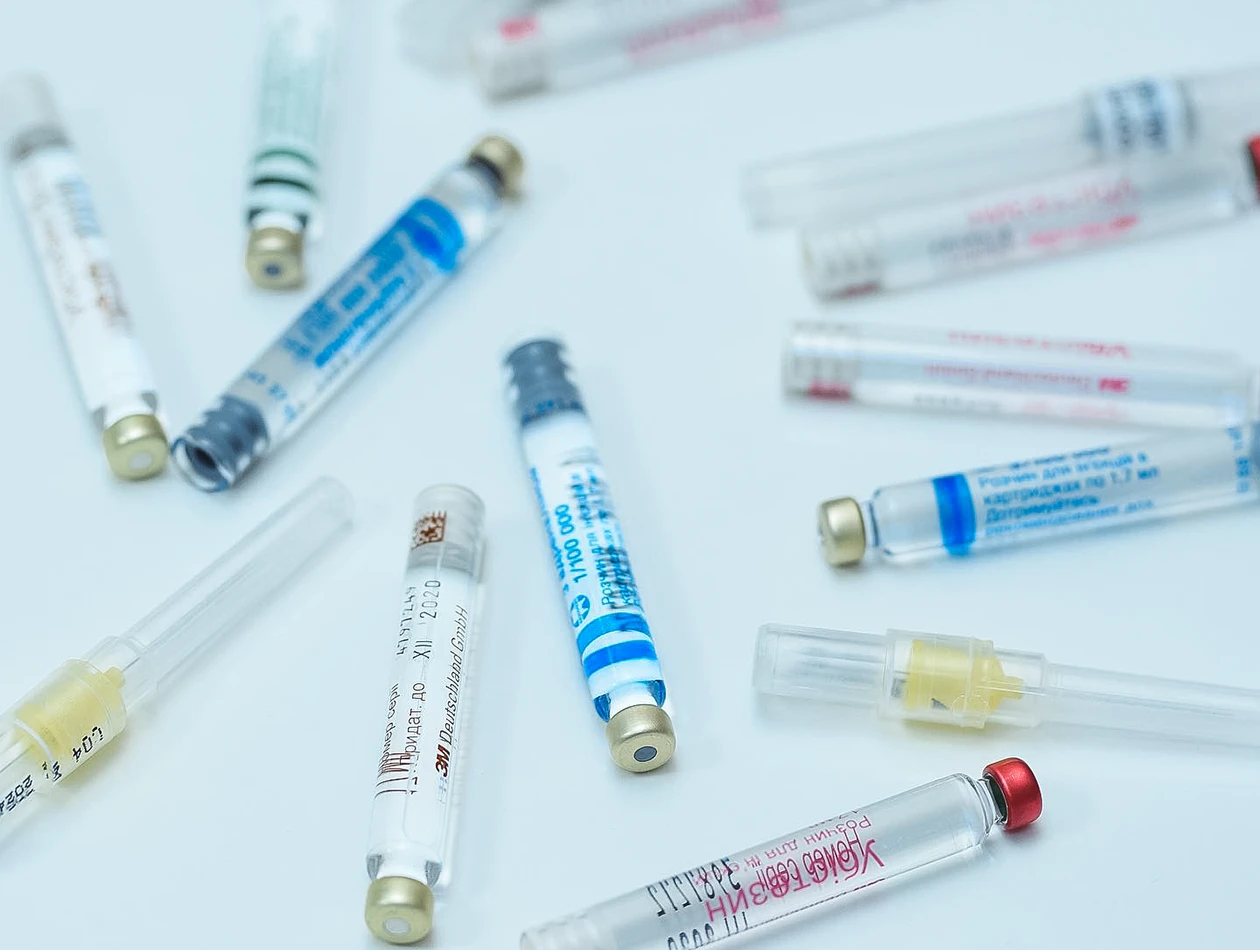
Scientific data and practical experience
The ideal agent for local anesthesia, sedation or intravenous anesthesia should have minimal complications, rapid onset of action and recovery time, and be well tolerated by patients. Not all side effects occur precisely because of the anesthesia itself, they can also occur due to individual intolerance. In most cases, the reactions are not severe and not life threatening. In complex cases, doctors provide emergency care. As noted by[a] group of researchers from Japan and the USA, only about 1% of all side effects from the use of anesthesia really belong to allergic reactions.
Allergic reactions
Anesthesia used in dentistry can cause allergic reactions, including:
- Skin rash
- Itching
- Nettle-rash
- Angioedema
- Anaphylactic shock.
Allergic reactions to anesthesia in modern dentistry are quite rare, as doctors use advanced drugs and weigh the possible risk with the intended benefit. In particular, the contraindications that the patient has got are taken into account (these may be problems with the cardiovascular system, the central nervous system, glaucoma, bronchial asthma, etc.). If there are cases of severe allergic reactions in the patient’s history, a test is previously performed that will show whether there is a possibility of using a particular drug.
Due to the low risk of an allergic reaction, the use of anesthesia is fully justified and carries significant benefits for successful and comfortable dental treatment.
Arguments for the use of anesthesia
Anesthesia during dental treatment has the following important benefits:
- The patient experiences less stress
- The patient is less likely to refuse timely treatment for fear of pain
- The dentist gets the opportunity to conduct high-quality manipulations without the risk of errors that could occur due to overanxiety of the patient.
For most patients, these benefits play a key role in maintaining oral health.
In dentistry, different types of anesthesia can be used, each of which has its own mechanism for relieving the patient of pain and stress:
- Local anesthesia using anesthetic ointments, gels, sprays. Relieves the patient from the fear of pain not only from dental procedures, but also from injection, since the drug is applied superficially.
- Local injection anesthesia. Reliably protects against pain during long dental procedures, with a large volume of intervention.
- Local anesthesia with sedation — supplemented by the use of a sedative that relieves stress and excitement, helps to remain calm even in patients with high levels of anxiety. In this case, consciousness is preserved.
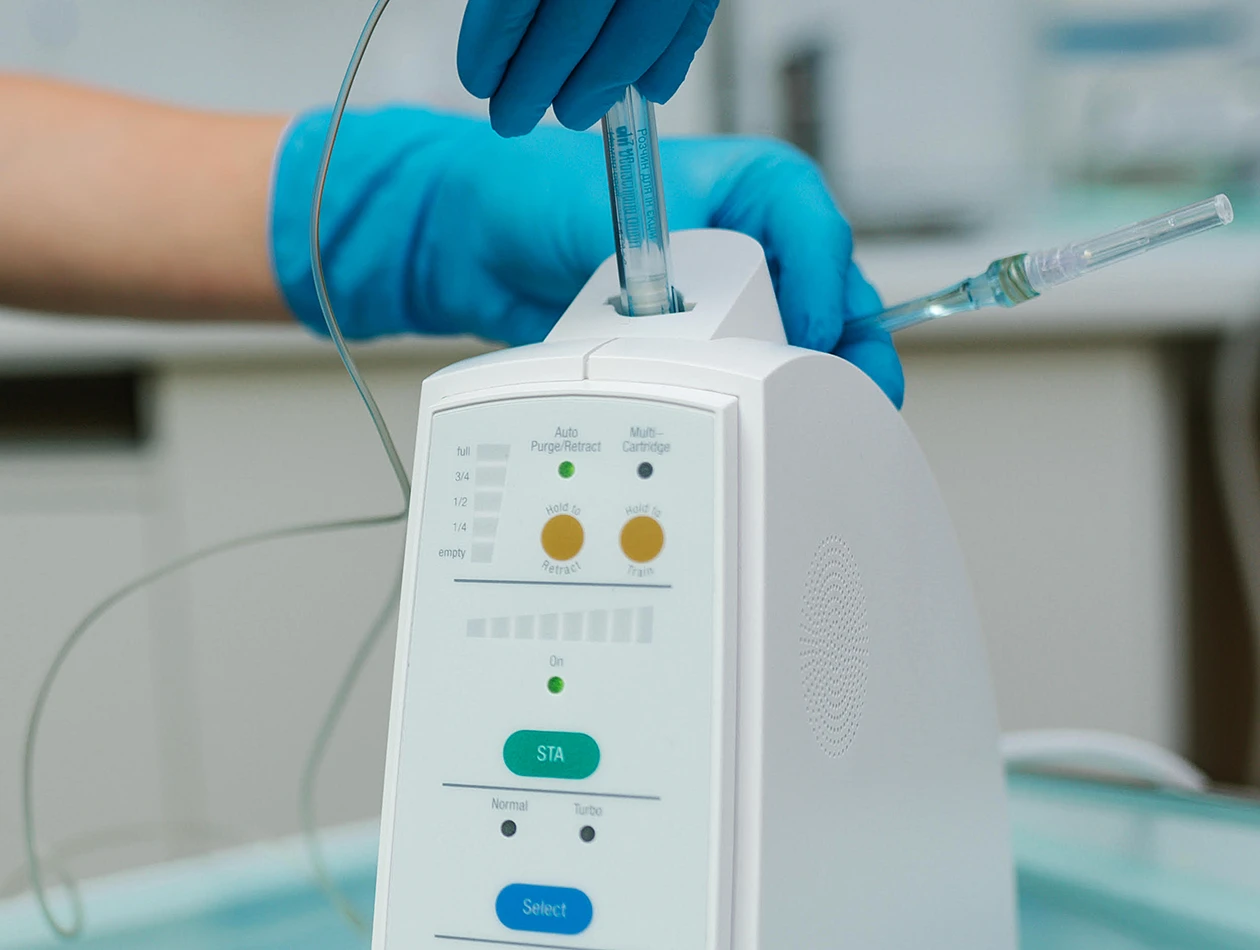
Practical advice for patients
If dental treatment is planned, it is important to discuss the following issues with your doctor:
- What kind of anesthesia will be applied
- How long can I not eat and drink (including alcoholic beverages) before the procedure?
- If the patient is taking medications — is it necessary to stop taking them
- How to psychologically tune in to the procedure
- What are the possible complications and how to eliminate them
- If you have previously had an allergy to anesthetics, what option for anesthesia would be optimal in this case.
In addition, it is important to know in advance the recommendations for the period after the dental procedure with anesthesia. The basic rules are:
- Pay special attention to controlling the movement of the jaws to reduce the risk of biting the tongue, lips, cheeks (when the sensitivity is still absent or reduced)
- During the first 2 hours — do not eat or drink, during 3–4 hours — do not drink hot drinks and food
- Do not drive on the day of anesthesia
- Avoid physical activity
- If any alarming symptoms appear, get help from a doctor.
Anesthesia is the key to comfortable dental treatment
The use of anesthesia expands the possibilities of dentistry because with anesthesia, doctors can carry out full treatment, which can be painful and unpleasant, and the patient does not suffer from pain and stress. Modern drugs have a minimum of side effects and rarely cause serious allergic reactions, so the benefits of their use far outweigh the risks.
If there is a need for anesthesia, it is worth relying on the experience of modern dental clinics, whose doctors conduct treatment in accordance with recognized international protocols, consider the individual characteristics of the patient and possible contraindications.

